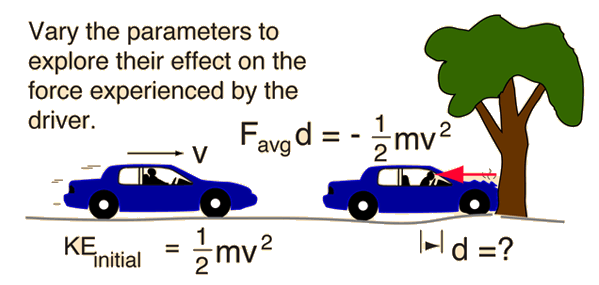The physics of a Motor Vehicle Accident (MVA) is incredible. It is easy to experience impact forces greater than most Air Force pilots experience in aerial combat, and they have suits that help protect them. Seatbelts do offer a layer of protection to the common motorist, but they do have their limitations.
The single-shoulder seatbelt design we are most familiar with today offers a motorist unbalanced protection, often exposing motorists to rotational spinal injuries caused by a twisting motion during a collision or sudden stop. Full-harness seatbelts worn by racecar drivers and fighter pilots work to combat these rotational injuries in particular.
The head and neck possess an even greater risk of deceleration injuries because they remain entirely unsupported. The neck, we most commonly associate with injuries like whiplash, but the greatest force is experienced by the 8lb object at the end of that whip — your head!
How much force does a driver experience during a collision?
When a patient visits us with an injury from a recent car accident, we like to put their experience into perspective by understanding the physics behind the collision. To do that, one of our favorite tools is a force calculator for car accidents that we found on a physics-based website called HyperPhysics.
The following scenarios calculate the average impact force a driver (160 lbs) will experience when a vehicle traveling at 30 mph stops within 1 ft.

Scenario 1: If firmly held in non-stretching seatbelt harness: Stopping distance 1 ft.
- Deceleration = 967 ft/s2 = 294 m/s2 = 30 g’s
- Force = 4813 lb = 21412 N = 2.4 tons
Scenario 2: If not wearing seatbelt, stopping distance determined by nature of collision with windshield, steering column, etc. : stopping distance 0.2 ft.
- Deceleration = 4836 ft/s2 = 1474 m/s2 = 150 g’s
- Force = 24068 lb = 107059 N = 12 tons!!
Scenario 3: If seat belt harness stretches, increasing stopping distance by 50%: 1.5 ft.
- Deceleration = 645ft/s2 = 197 m/s2 = 20 g’s
- Force = 3209 lb = 14274 N = 1.6 tons
These calculated numbers assume constant deceleration, and are therefore an estimate of the average force of impact.
What we learned from the numbers
So, worst-case scenario, the driver will experience 12 TONS of force (24,000 lbs of force). In the best-case scenario they will experience 1.6 tons of force (3,200 lbs of force). Even if a new car reduces these forces by 50%, that still leaves a person experiencing 1700lbs of force. At my best, I have lifted 405lbs off the floor to a standing position. It was really, really heavy. Experiencing over 3x that force is incomprehensible to me.
I found two videos that might help you visualize these types of impacts in slow motion. This first demonstrates the force that your neck may experience during an accident and the second video demonstrates the speed of which an accident can happen.
https://www.youtube.com/watch?v=svvGGrfu9HM



